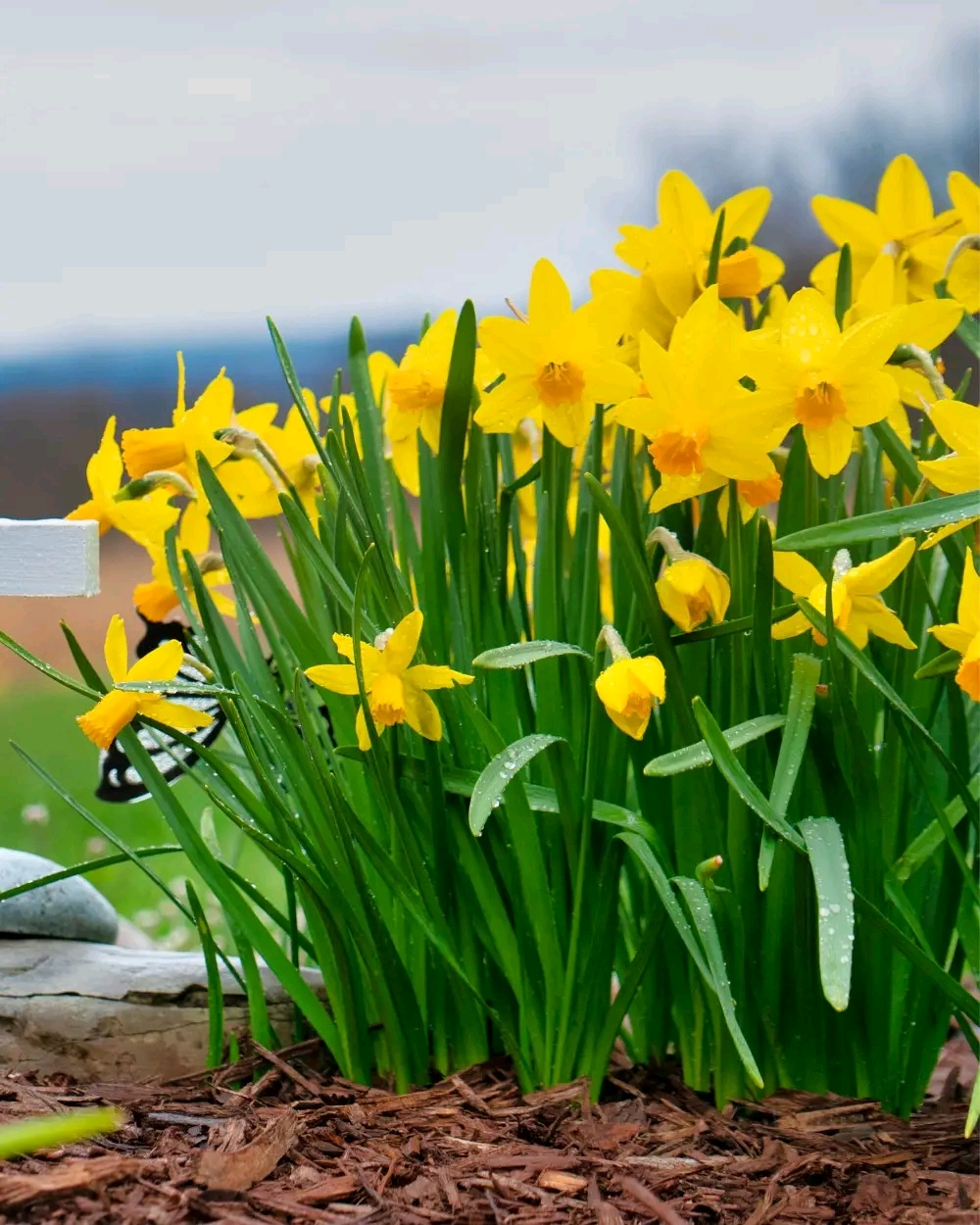Daffodils are one of the most cheerful and reliable signs that spring is on its way. Their bright yellow (and sometimes white, orange, or pink) blooms bring life to gardens after the long, cold months of winter. But there’s more to these sunny flowers than meets the eye. Whether you’re a beginner or a seasoned gardener, here are 10 essential things to know about growing and enjoying daffodils.
1. They’re More Than Just Yellow
When people think “daffodils,” they often picture bright yellow blooms — but daffodils come in a surprising range of colors and forms. You can find varieties in white, cream, peach, orange, and even bi-color combinations. There are trumpet-shaped blooms, doubles with frilly petals, and miniature types perfect for pots.
2. Botanically, They’re Narcissus
“Daffodil” is the common name for plants in the genus Narcissus. This name comes from Greek mythology, referencing the story of Narcissus, a youth who fell in love with his own reflection. The scientific name is used by horticulturists, but most gardeners simply say “daffodil.”
3. They’re Early Bloomers
One reason gardeners love daffodils is their eagerness to bloom. They often appear in late winter or early spring, sometimes even poking through snow. This makes them perfect for brightening gardens before most other plants have woken up.
4. Plant in Fall for Spring Beauty
Daffodils grow from bulbs, and like most spring-flowering bulbs, they need to be planted in autumn before the ground freezes. This allows them to establish roots over winter and be ready to burst into bloom once temperatures warm up.
5. They’re Perennial and Long-Lived
Unlike annuals that need replanting every year, daffodils are perennials. Once planted, they return year after year, often multiplying and forming larger clumps over time. In fact, some daffodil plantings have been known to last for decades without much care.
6. They Don’t Like to Be Crowded
While daffodils will naturalize (spread) over time, overcrowding can eventually reduce flowering. If you notice fewer blooms, it might be time to dig up and divide the bulbs. This is best done after the foliage dies back in late spring or early summer.
7. Foliage Must Be Left Alone After Blooming
One of the biggest mistakes new gardeners make is cutting back daffodil leaves right after flowering. The leaves are crucial for photosynthesis, which replenishes the bulb’s energy for the next year’s blooms. Always let the foliage die naturally — usually about 6–8 weeks after flowering.
8. They’re Deer- and Rodent-Resistant
If you struggle with deer or squirrels eating your flowers, daffodils are your friend. They contain lycorine, a natural chemical that makes them toxic to animals (and humans if ingested), so pests tend to leave them alone.
9. Perfect for Naturalizing
Daffodils are ideal for planting in informal drifts along woodland edges, meadows, or under deciduous trees. They can handle light shade and look beautiful when allowed to spread naturally over the years.
10. They Can Bloom in Containers Too
If you don’t have garden space, daffodils grow beautifully in pots. You can plant bulbs in fall, keep them in a cool location over winter, and bring them out in spring for a burst of color on patios, balconies, or entryways.
🌟 Final Thought
Daffodils are more than just a pretty flower — they’re resilient, low-maintenance, and bring a promise of renewal every spring. Once planted, they’ll brighten your garden for years to come, often with very little effort.
If you plant a mix of early-, mid-, and late-blooming varieties, you can enjoy their cheerful faces for weeks on end. And with so many forms and colors to choose from, there’s a daffodil for every garden style.
More Articles You Might Like
-
Texas Toast Sloppy Joes: The Crunchy, Cheesy Upgrade You Didn’t Know You Needed
There’s something timeless about sloppy joes. For generations, this saucy, savory, and slightly sweet ground beef sandwich has been a go-to comfort food in American kitchens. It’s quick, filling, and family-friendly—perfect for busy weeknights. But what if we told you there’s a way to take this classic dish up a notch? Enter the Texas Toast…
-
Classic Pig Pickin’ Cake
When it comes to Southern desserts, few sweets shine as brightly as the Classic Pig Pickin’ Cake. This nostalgic cake, sometimes called a “Mandarin Orange Cake,” has roots deep in Southern tradition. It gets its playful name from its frequent appearance at pig pickin’s—Southern-style barbecue gatherings where communities come together to enjoy slow-cooked pork, sides,…
-
Lemon Garlic Butter Chicken with Creamy Parmesan Pasta
There’s something irresistible about the combination of tender, golden-browned chicken paired with a creamy pasta coated in Parmesan cheese. Add the brightness of lemon, the depth of garlic, and the richness of butter, and you have a recipe that feels indulgent yet approachable enough for a weeknight dinner. Lemon Garlic Butter Chicken with Creamy Parmesan…



